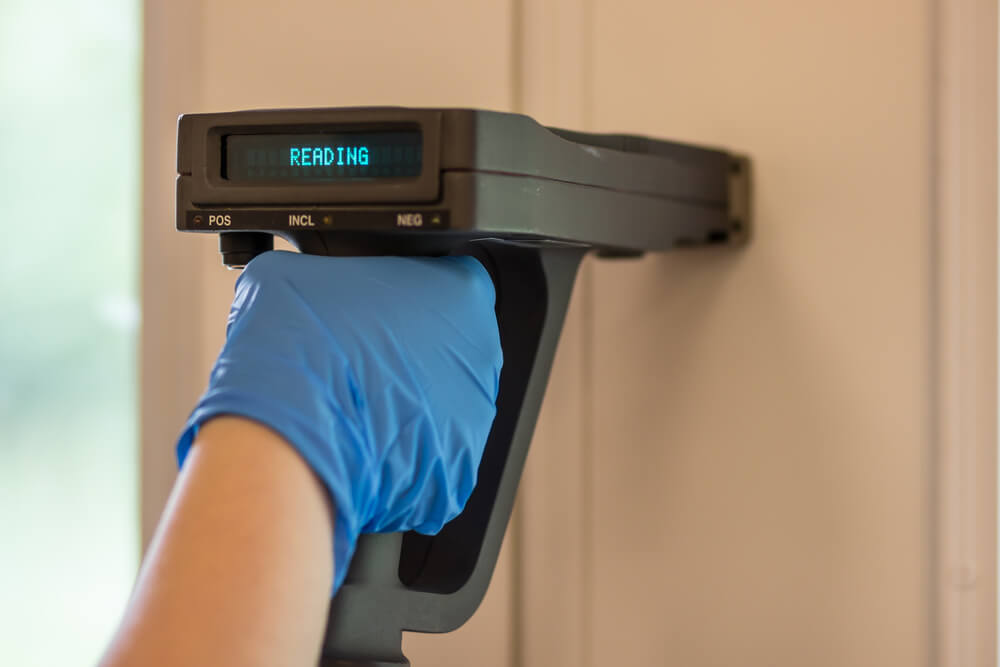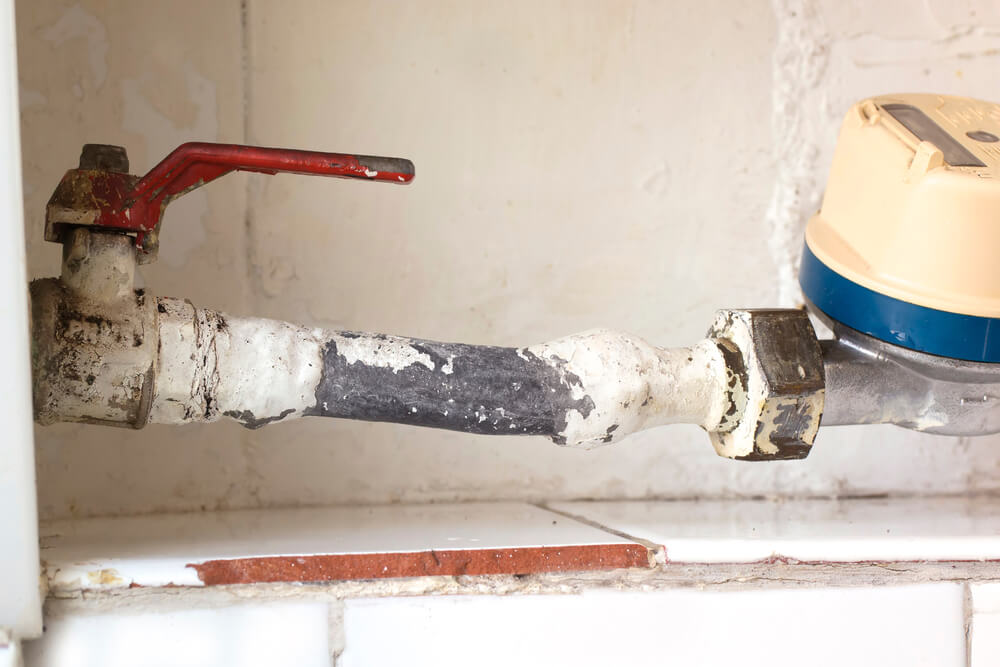If you rent out homes or apartment buildings to tenants, your first priority is providing a safe, comfortable place for your tenants to live. As a landlord, you know about fire safety codes, safety locks for windows, snow shoveling laws, and more. If you rent out homes or buildings built before 1978, it is paramount to understand potential lead exposure risks for your occupants.
The effects of lead poisoning are uncomfortable at best and lethal at worst. If lead exists anywhere on your property, occupants can get exposed through paint, water, and soil. Children are at the highest risk for lead poisoning, which can cause symptoms such as:
- Weight loss
- Developmental delay
- Vomiting
- Hearing loss
- Seizures
- And more
To protect your tenants from the dangerous effects of lead poisoning, it is essential to understand the risks of lead exposure and how to remove it from your property. Let’s explore everything you need to know to protect your occupants against lead exposure.
What Laws Protect Against Lead Exposure?
Nowadays, it seems obvious that lead paint is hazardous. However, since the health risks were unknown, lead paint was used prevalently in homes, buildings, and art before the 20th century. People appreciated lead paint for its color, density, and long-lasting qualities. Even though ancient texts noted symptoms that the paint caused, it continued to gain popularity.
Lead paint usage peaked in the 19th century, and people frequently used it to paint homes in Europe and the Americas. Eventually, by the early 1900s, more and more people became aware of the health issues caused by lead paint. Even still, the United States didn’t transition away from lead paint until the 1970s, when Congress finally instilled laws against lead usage.
The first law against lead usage came in 1971 when Congress banned lead-based paints in new residential and commercial buildings. The caveat was this law only applied if the buildings were constructed with federal funds.
The U.S Consumer Product Safety Commission passed a complete ban on lead-based paint in 1977. Lead paint was banned from use in residential and commercial properties, toys, and furniture. The Consumer Product Safety Commission declared that all products must not contain a lead concentration greater than 0.009 percent. Considering that early paints contained up to 70% lead concentration, this number was necessarily stark.
Lead usage in residential properties phased out by 1980 thanks to the nationwide ban. Even though lead was banned for future use, it still existed in millions of homes built before the law was introduced. Because of this, a new disclosure law was enacted to keep residents safe.
In 1996, the U.S Environmental Protection Agency (EPA) and the Department of Housing and Urban Development passed the Lead-Based Paint Disclosure Act. This act requires landlords, home sellers, and realtors to disclose the presence of lead to prospective buyers and renters of homes built before 1978.
The Responsibility of Landlords
As you can tell, landlords have an immense responsibility when it comes to protecting their tenants. Since lead exposure can be a matter of life or death, occupants need to be notified of lead risk to make an informed decision. Disclosure is essential when it comes to residences built before 1978.
The EPA requires renters to receive the following information about buildings constructed before 1978 before signing a lease:
- Information regarding the presence and location of lead-based paint or other lead hazards in the building
- EPA-approved information on identifying and managing the indicated hazards
- A Lead Warning Statement in the contract that confirms the property manager’s compliance with residents’ notification requests
Chipping lead-based paint poses the highest risk because small children often will put foreign objects like paint chips in their mouths. If you own a rental property with lead risks, diligently check for chipping and cracking in the following areas:
- Stairs
- Handrails
- Banisters
- Porches
- Window sills
- Door frames

Housing Inequality Still Affects Health
Unfortunately, rental properties that still contain traces of lead pose health risks for already vulnerable populations. Since older, unkempt properties are often far less expensive than new properties, low-income families are most affected by lead poisoning today.
Housing inequality is demonstrated as an imbalance of housing standards that negatively affects people in particular social or racial demographics. Historically, low-income families needed to live in the inner-city because they could not afford transportation to jobs from outside the city.
This historical pattern has continued into modern times. Inner-city neighborhoods are often left without proper resources, and low-income families cannot afford rent in newer buildings.
Racial discrimination further affected the housing inequality that we see today. Jim Crow segregation laws were in full force between the 1870s and 1950s. These discriminatory laws actively forced Black and Latino families out of predominantly white neighborhoods.
The consequences of segregation are still seen today, with majority-white neighborhoods having better school systems and safer housing. Majority-Black and Latino neighborhoods disproportionately experience mold, lead exposure, and rodents in their housing.
Common examples of housing inequality are:
- Public housing is only constructed in crowded, minority neighborhoods
- Landlords take preference for white applicants over Black or Latino applicants
- Low-income families live in units that don’t meet safety codes
- Black and Latino families are shown lower-quality units than white families
The responsibility of landlords continues further when housing inequality comes into play. The only way to actively fight against housing discrimination is to give minority groups a fair chance at affordable housing. Additionally, building owners must manage lead exposure to reduce the disproportionate findings of lead poisoning in minority groups.
How to Remove Lead for Good
Lead exposure can cause life-long complications. Additionally, lead poisoning is one of the many symptoms of housing inequality and discrimination. So, what can be done to help? The best way to ensure that lead poisoning doesn’t affect current and future generations is to eradicate it.
Removing traces of lead in properties is not a simple feat, and if the lead is not removed correctly, the situation can worsen. However, removal is possible with the help of EPA-certified lead abatement professionals.
If you’re ready to remove lead from your rental property for good, start by hiring an EPA-certified lead abatement company. Due to the dangerous nature of lead, anyone without a certification should not attempt to work with lead. Certified professionals will come supplied with safety equipment such as:
- Goggles
- Shoe covers
- Gloves
- Disposable coveralls
- Respirators
The area will need to be cleared of all people and pets, and the company you hire will provide the proper signage to indicate this. Be sure to give all tenants plenty of notice before the abatement occurs so that they can make arrangements to be out of the building.
There are four different ways abatement companies can manage lead paint. Each approach depends on the level of lead risk, location, and budget. The four methods are:
Replacement
Replacement is the only method that completely removes the threat of lead exposure. Replacement involves replacing all products and structures in lead-contaminated areas. Lead abatement professionals will handle the removal, and a construction or utility company will install the new materials.
Removal
Removal involves a technician using wet sanding or a heat gun to strip away lead chemically. The chemical strippers remain in place for a few minutes up to 48 hours. Be aware that chemical strippers present as fire hazards, and many can leave behind residues.
Enclosure
Enclosure is not a permanent lead removal method, but it offers a level of protection. Lead-contaminated paint is covered up by new materials. Common materials used in this process are:
- Drywall
- Tile
- Aluminum
- Acrylic sheets
- Fiberboard
- Vinyl
Encapsulation
Encapsulation presents the lowest cost but the lowest level of protection. A protective coating is placed over lead-based paint, which traps the lead paint inside. Since the quality of the layer can diminish over time, it is not an acceptable long-term solution. Encapsulation works best as a quick fix before proceeding with complete lead removal.
Keep Tenants Safe and Protected
Early usage of lead-based paint caused lasting adverse effects that we still see today. While lead exposure is frustrating to deal with today, the consequences are deadly if left ignored. As a landlord, protecting your occupants from lead exposure is vital. Do your research, inform future tenants of any risks, and pursue lead abatement as soon as possible.
ZOTApro offers a variety of accredited courses so that lead abatement professionals can carry out the critical work of lead removal. Take the safety of your tenants into your own hands, and hire an EPA-certified lead abatement team today.


